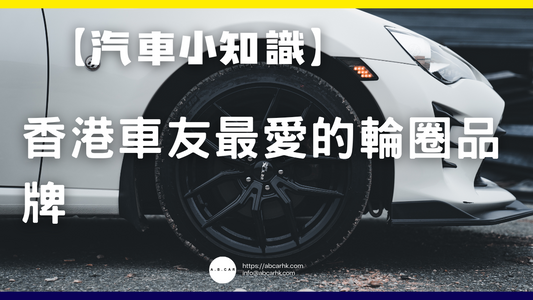[Pet Tips] 8 Common Digestive Problems in Cats

🐾 8 Common Digestive Problems in Cats - Detailed Introduction
Many cat owners assume that as long as their cats are well fed, well hydrated, and asleep, they're fine. However, cats' stomachs are actually quite sensitive and fragile. Improper diet, excessive stress, and even underlying medical conditions can all contribute to digestive issues. We've consulted numerous veterinary recommendations, online resources, and our own personal experience to compile a list of eight common digestive issues for felines , breaking them down in detail. This helps cat owners recognize the signs early and address them promptly, preventing distress for their pets.
🌟 Question 1: Vomiting
The most common yet most overlooked
- Causes: Eating too fast, eating inappropriate food, hairballs, food allergies, and even kidney disease.
- Symptoms: Vomiting undigested dry food, clear liquid, or hairballs.
- The editor has observed that my cat sometimes eats too fast and vomits the food back out “untouched” within three minutes🤢.
👉 Recommendations:
- Slow down your eating with a slow food bowl.
- If your dog frequently vomits clear or bile-colored liquid, you should see a veterinarian as soon as possible, as it may be gastritis or other internal medicine problems.
🐱 Question 2: Diarrhea
"Soft and watery stools, I am exhausted from cleaning the cat litter box every day."
- Causes: Sudden dietary changes (e.g. sudden food changes), food intolerance, gastroenteritis, parasites, stress.
- Characteristics: The stool becomes loose and sometimes contains mucus or blood.
- The editor’s experience: I once helped the master to transfer food too quickly, and the next day the food exploded 💩. I cleaned the sand tray so much that I doubted my life.
👉 Recommendations:
- It takes at least 7 days to transition the grain and gradually mix the new and old grains.
- If diarrhea persists for more than 2 days or contains blood, see a doctor.
😿 Question 3: Constipation
"I haven't had a shit in a few days, I'm so scared"
- Causes: Insufficient water intake, lack of exercise, hairballs, intestinal problems.
- Characteristics: difficulty in defecation, hard stools, and even squatting in the litter box for a long time.
- Editor's observation: When cats are constipated, they will make the "litter tray sigh". It's so sad that they can sit for a long time but get no results.
👉 Recommendations:
- To increase the amount of water your cat drinks, you can use a water dispenser to attract it to drink water.
- The feed can be high in fiber or specially formulated to prevent constipation.
- Severe cases require veterinary treatment and may require stool softeners.
🛋️ Question 4: Hairball Problem
"You clean yourself, but the price is gastrointestinal stress"
- Cause: Cats swallow too much hair when licking their fur, which accumulates in the gastrointestinal tract.
- Characteristics: Frequent retching, vomiting hairballs, and indigestion.
- Editor’s experience: The shedding season is the worst in spring. I often hear “cough cough cough” sounds, and I’m so scared that I think they are choking.
👉 Recommendations:
- Comb your cat's hair regularly to reduce the risk of hair ingestion.
- You can choose hairball formula dry food or hairball paste to help expel hairballs.
🍗 Question 5: Food sensitivity or intolerance
"If the stomach and intestines are not eating the right food, they will react."
- Cause: Some cats are sensitive to certain proteins (such as beef, chicken), lactose or additives.
- Symptoms: Diarrhea, vomiting, itchy skin.
- Editor’s observation: I once tried giving my cat cheese and it pooped that night, proving he’s lactose intolerant🥛.
👉 Recommendations:
- Avoid feeding human food, especially milk.
- If food sensitivity is suspected, try a hypoallergenic formula and gradually observe the reaction.
🐾 Question 6: Loss of Appetite
"Not eating is actually a big alarm signal."
- Causes: May be dental disease, gastroenteritis, stress, liver and kidney disease.
- Characteristics: Has no interest in favorite cans and even refuses to eat snacks.
- Editor’s experience: One time my pet suddenly stopped eating completely. I was so scared that I immediately took him to see a doctor. It turned out that he had tooth inflammation.
👉 Recommendations:
- If a cat does not eat for more than 24 hours, you should seek medical attention, because long-term food insufficiency can cause fatty liver disease, which is extremely dangerous⚠️.
🧪 Question 7: Inflammatory Bowel Disease (IBD)
"Chronic gastroenteritis is not easy to detect"
- Cause: Abnormal immune system, leading to long-term intestinal inflammation.
- Symptoms: intermittent vomiting, diarrhea, and weight loss.
- The editor checked the information: Many chronic gastrointestinal discomforts are actually diagnosed as IBD and require long-term management.
👉 Recommendations:
- A veterinary diagnosis is required, possibly with blood work or ultrasound.
- Treatment includes special diets and medications.
🚑 Question 8: Parasitic infection
"Gastrointestinal thieves affect health"
- Causes: Common causes include roundworms, tapeworms, whipworms, and coccidia.
- Symptoms: Diarrhea, vomiting, blood or mucus in stool, and weight loss.
- Editor’s experience: A friend adopted a stray cat, and it turned out to have intestinal parasites, and needed to be treated with injections and medication.
👉 Recommendations:
- Deworm your cat regularly, especially if it goes outdoors or comes into contact with other animals.
- Maintain a clean environment and avoid contact with contaminated food or water sources.
🎉 Editor’s Summary
Although cats may seem tough, gastrointestinal issues are actually quite common, and the symptoms are often subtle and easily overlooked. 😔 It's important to pay attention to your cat's eating habits, bowel movements, and mental state, as these are all important indicators of gastrointestinal health.
👉Minion Missions :
- Observe the owner's food intake and bowel movements every day.
- If the abnormality persists for more than two days, take the pet to the veterinarian.
- Remember: Early detection means less pain and better health for your pet🐱💖.



